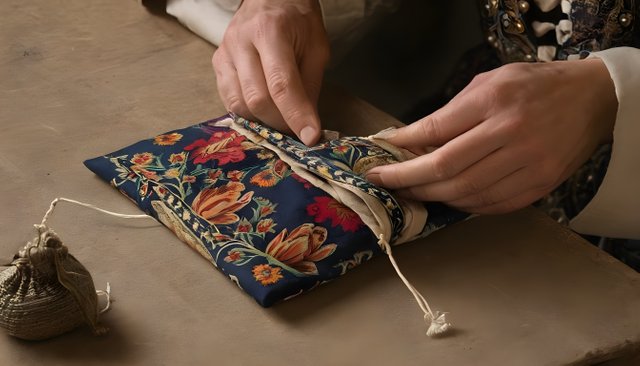HOW TO TURN A $100 INVESTMENT INTO $1000 WITH HAND CRAFT

Are you a skilled artisan who feels the world has gone too digital? Fret not!
Turns out demand is still heavy for the intrinsic personal possesions we adorn in our everyday lives.
So if you know how to sew, knit or have mastered embroidery, this is a help guide for you.
Now let's break down the business idea of selling handmade crafts as an example, including all the steps from setup to achieving the $1000 goal.
Business Idea: Selling Handmade Crafts
Setup Phase:
a. Research and Planning (1 week): Spend time researching popular handmade crafts, identifying your target market, and analyzing competitors. Create a business plan outlining your goals, target audience, pricing strategy, and marketing plan.
b. Initial Investment ($50 - $70):
- Raw Materials: Purchase crafting materials such as yarn, fabric, beads, or wood, depending on the type of crafts you plan to make. Allocate around $20 - $30 for initial materials.
- Equipment: Invest in basic crafting tools and equipment, such as needles, scissors, glue guns, or a sewing machine. Budget around $20 - $40 for essential equipment.
- Transport: Estimate transportation costs for sourcing materials and delivering finished products if necessary. Allocate around $10 for transportation within the first month.
Production Phase:
a. Crafting (Ongoing): Dedicate time to creating your handmade crafts according to your chosen designs and styles. Depending on your availability and the complexity of the crafts, aim to produce a consistent inventory each week.
Sales Phase:
a. Online Platform Setup (1 week): Create an online store on platforms like Etsy, Shopify, or your own website. Set up product listings with high-quality images and detailed descriptions.
b. Marketing (Ongoing): Promote your handmade crafts through social media platforms, craft forums, and local community events. Allocate time each week for marketing activities such as posting on social media, engaging with followers, and reaching out to potential customers.
Saving/Reinvestment Strategy:
a. Revenue Reinvestment (Ongoing): As sales start to generate revenue, reinvest a portion of the profits back into the business. This could include purchasing additional materials, upgrading equipment, or investing in marketing efforts to expand your reach.
b. Budgeting (Ongoing): Track your expenses and revenue carefully to ensure profitability. Allocate a portion of the earnings towards covering ongoing costs such as materials, equipment maintenance, and transportation, while setting aside a portion as savings towards your $1000 goal.
Achieving the $1000 Goal:
a. Timeline: Depending on the demand for your handmade crafts and your sales strategy, aim to achieve the $1000 goal within 6-12 months.
b. Scaling Up: As your business grows and you approach your goal, consider scaling up production, expanding your product range, or exploring new sales channels to accelerate your earnings.
By following this step-by-step process and consistently investing time, effort, and resources into your handmade crafts business, you can work towards achieving your $1000 revenue goal within the specified timeframe. Adjustments may be necessary based on market feedback and business performance, so stay flexible and adaptable in your approach.
Goodluck!